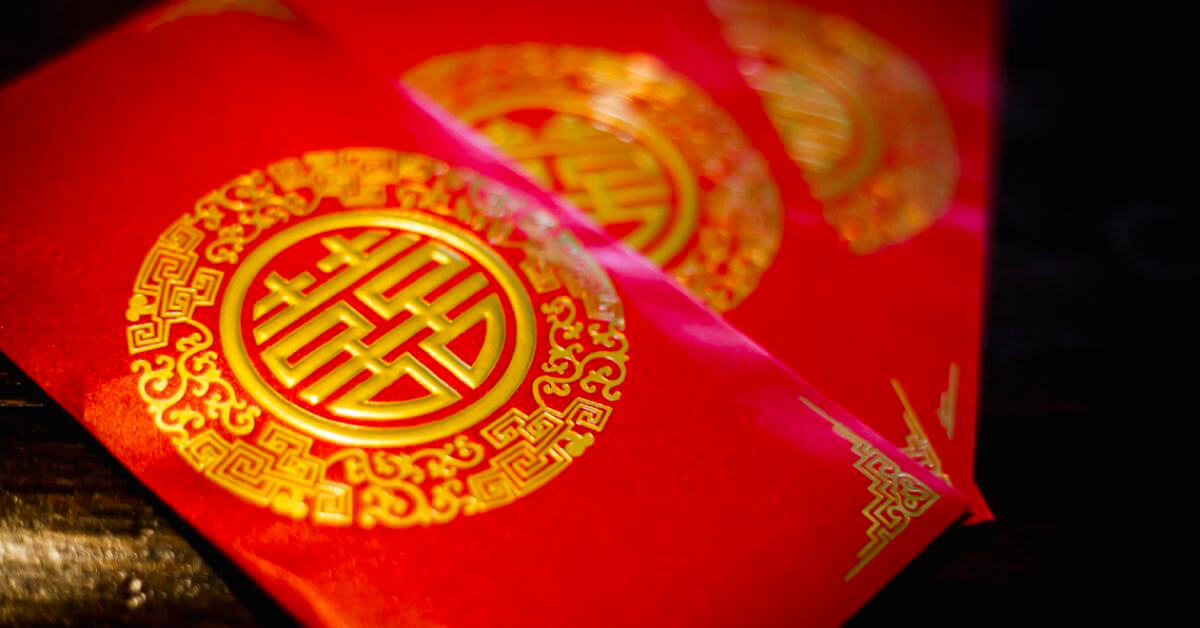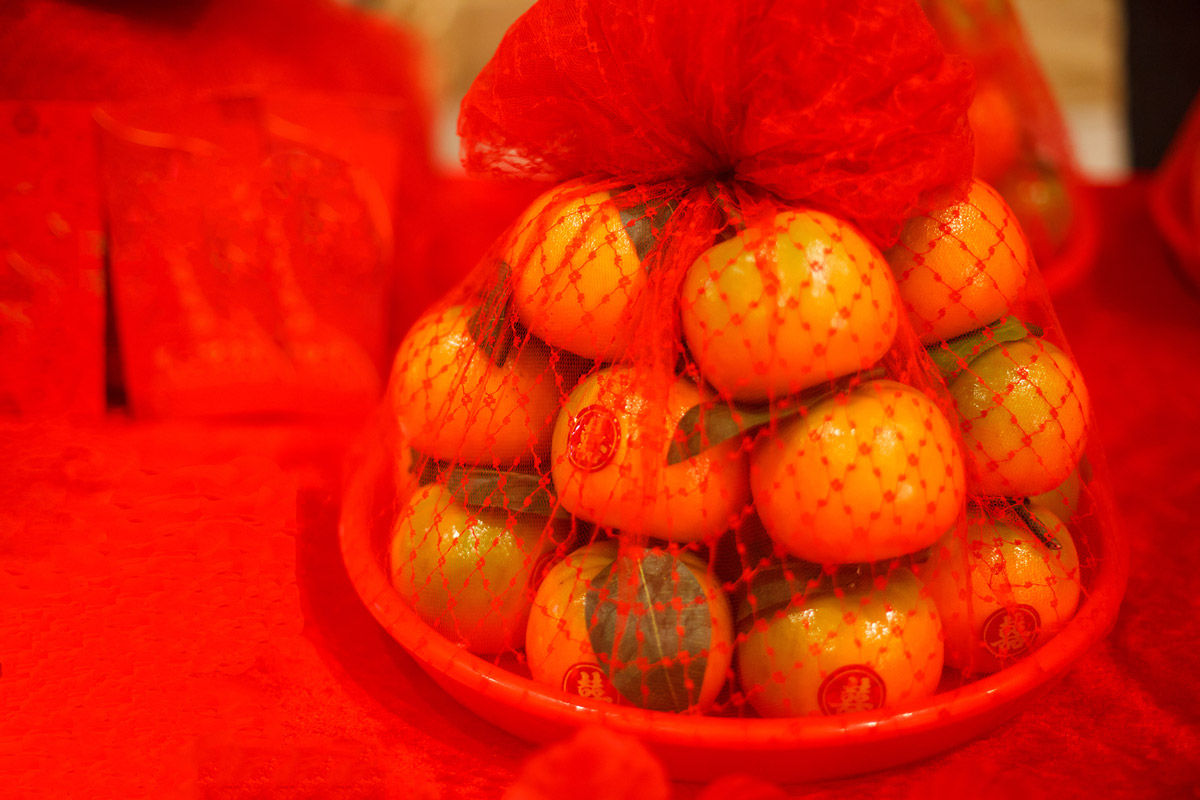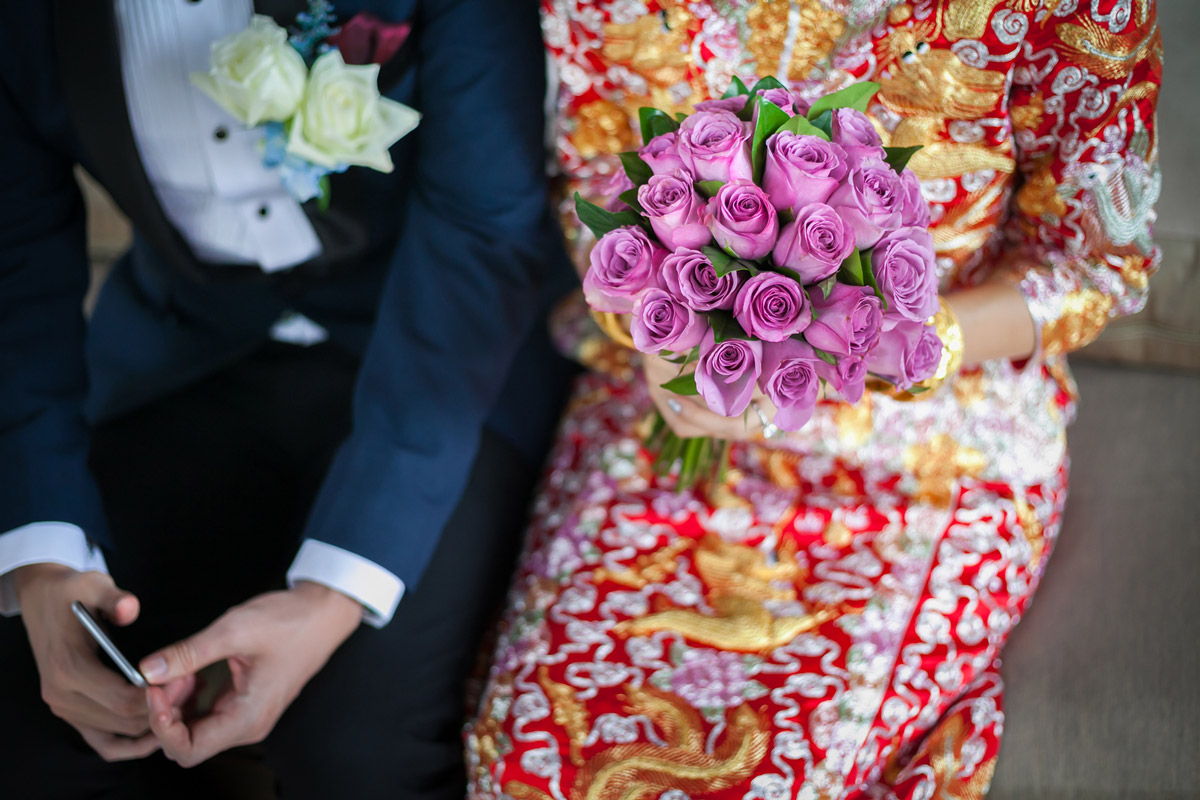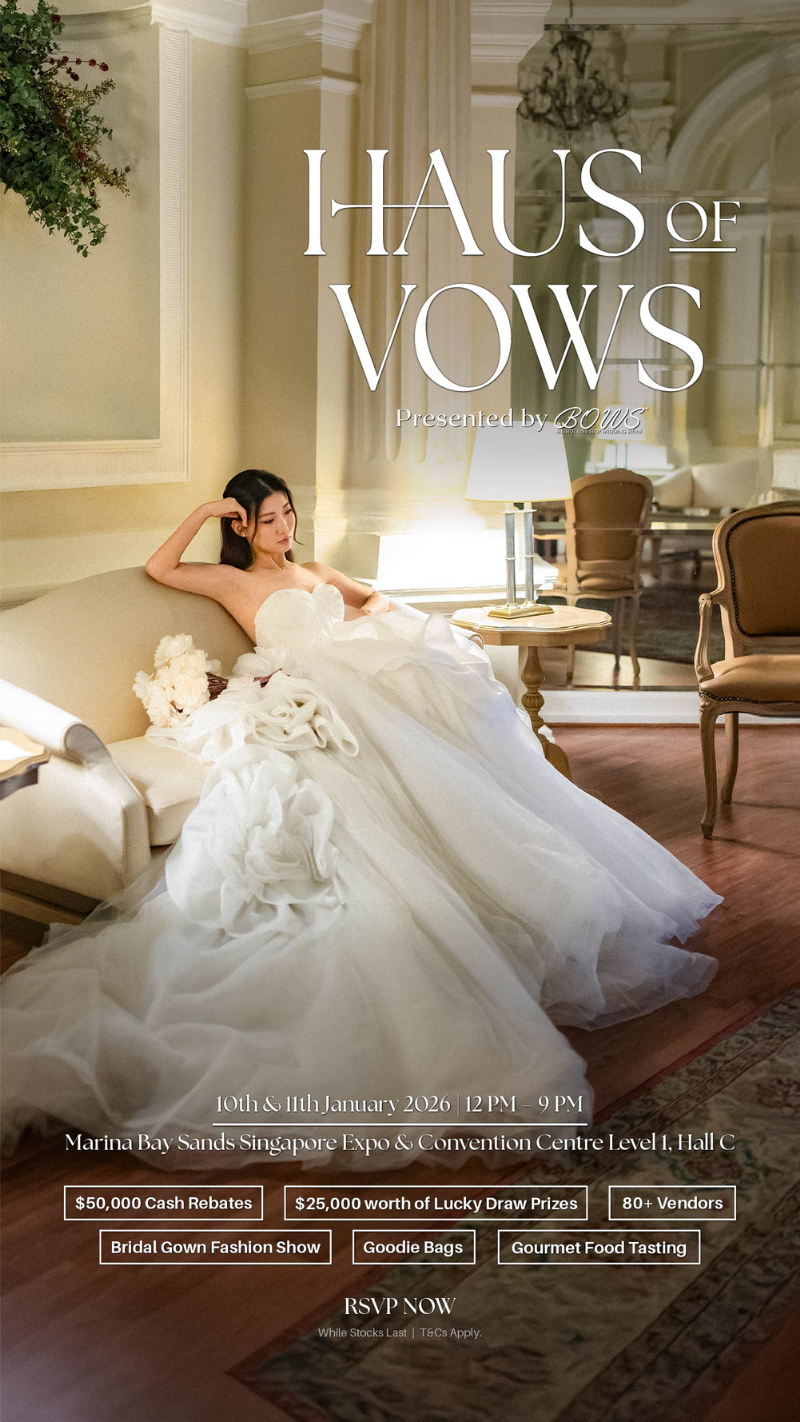An Insight into Chinese Wedding Customs: Guo Da Li, Si Dian Jin & Hui Li
2020-06-17

One of the most well-known Chinese wedding traditions, Guo Da Li is a term that most are familiar with. However, while we are aware that it involves some sort of gift exchange between families, not many truly understand the meaning of the Guo Da Li and its processes.
To give you a better insight into the wonderful, vibrant world of Chinese wedding customs and prepare you for your own wedding day, here’s an introduction to Guo Da Li’s origin, a breakdown of how it’s supposed to be, and the symbolism it signifies.
The origin of Guo Da Li
In the past, the Guo Da Li was held 2-3 months before the wedding. A custom of presenting the bride’s family with pre-discussed gifts, a matchmaker or senior relative would accompany the groom to present the Pin Jin, also known as the dowry money, and said gifts to the bride’s family.
The value of these betrothal gifts usually determined the financial stability of the groom, and it is to thank and show respect to the bride’s parents for raising the bride. It also represents the groom’s family’s desire to forge good relations with their future in-laws, and by accepting the gifts, the bride’s parents formally pledge her to the groom!
Guo Da Li today
Now, to speed up the process, the Guo Da Li is often held 2-3 weeks before the actual wedding ceremony and wedding reception. The groom still has to be accompanied by a matchmaker or an elder relative, and all of the food items and gifts are prepared in pairs and carried over in traditional tiered wedding baskets. These represent prosperity for the couple in the future, so the more tiers there are, the better!
Items needed & their significance

The exact items to gift the bride’s family will depend on the groom’s dialect group, but the common ones needed across all dialects include:
|
"Diaper" Red Packet (养育之恩礼金) |
To thank the bride's parents for her upbringing. |
|
"Car Door" Red Packet (开车门礼金) |
To thank the bride’s younger brother (小舅子) for opening the car door for the groom when he arrives at the bride’s house. |
|
Dragon & Phoenix Tray (龙凤喜盘) |
To hold the betrothal gift money (聘金) and 12 oranges (大吉) to represent auspicious blessings – 12 represents the number of months in a year. |
|
Small Double Happiness Stickers |
To stick on the bottles of wine and oranges as a traditional way to express happiness and good luck, as well as well-wishes of marital bliss and joy. |
|
Everlasting Red Cloth (百年谐老红缎) |
A piece of red cloth with the embroidered Chinese characters Bai Nian Xie Lao (百年谐老), this is to be hung at the bride’s house for at least 12 days after the wedding as a form of blessing for a harmonious marriage till old age and death. |
|
2 Bottles of Alcohol |
A gift for the father-in-law to wish him a long life (长长久久) and represent the groom’s filial piety. |
|
Alcohol Organza Bag |
To contain the bottles of alcohol inside. |
|
Black and Red Basket |
Used in the past to carry Guo Da Li items. |
|
2 Pairs of Dragon and Phoenix Candles (龙凤烛) |
Representing the perfect union, both pairs of candles are to be brought to the bride’s house, but the bride’s family will only keep the pair of Dragons while the groom will bring home the pair of Phoenixes. This symbolises the acceptance of the groom and the entrusting of the bride to him. |
|
2 Packets of 4 Treasure Jin Guo (四京果) |
To include red dates, lily bulb, longan, and lotus seeds.
Red Dates (红枣): To have good fortune (鸿运当头) Lily Bulb (百合): A harmonious union (百年好合) Longan (龙眼): Blessings for a good son (早生贵子) Lotus Seeds (蓮子): To have many children (连连生子) |
|
2 Packets of Sweet Endings (甜蜜喜糖) |
To include rock sugar and dried melon slices, which both represents a sweet life together (甜甜蜜蜜). |
|
2 Packets of 5 Colour Grains (五色豆) |
Must consist of different grains including red beans, green beans, wheat, soybeans, barley, and rice. This symbolises blessings for the couple to have bountiful harvests, and in turn, wealth. (五谷丰收). |
|
8 Canned Pig Trotters (猪脚罐) |
In the past, roasted pigs were used and it was to represent prosperity because only the wealthy could afford such a delicacy. Today, the roasted pig has been replaced with canned pig trotters for convenience and longer shelf life. |
|
12 Oranges |
To symbolise good luck. |
On top of the items above, the groom’s mother needs to gift the bride her betrothal jewellery. A form of blessing for the bride and a show of her acceptance into the new family, the betrothal jewellery will depend on the bride’s dialect group, each with their own symbolism and well-wishes.
Some examples include a pair of gold bangles for the Hokkiens, a pair of Dragon and Phoenix bangles for the Cantonese, and a 4-piece set known as Si Dian Jin for the Teo Chews — that’s right, the Si Dian Jin was traditionally only for Teo Chews!
However, Singaporeans today are integrating the Si Dian Jin into their wedding practices regardless of their dialects, which is also why “Si Dian Jin” is often used to refer to betrothal jewellery in layman’s terms. Instead of the traditional gold, couples are also now open to other types of jewellery such as jade and diamonds.
The Guo Da Li process
Now, you might be wondering how you should go about presenting these gifts to your future parents-in-law. Do you simply thrust them into their faces? Leave them at the doorstep?
There is, in fact, a way to prepare and present these betrothal gift items, which are as follows:
1. Paste Double Happiness Stickers onto the oranges and bottles of alcohol
2. Place the 12 oranges (with the stickers) and betrothal gift money (聘金) onto the Dragon & Phoenix Tray (龙凤喜盘)
3. Place the 2 bottles of alcohol (with the stickers) into an organza bag
4. Place all the food items into the basket and pass the basket, alcohol, candles, and tray to the bride’s parents.
Afterwards: Hui Li
Upon receiving the betrothal gifts from the groom, the bride’s family must reciprocate the generosity by returning a portion of the gifts. This is a gesture of gratitude, and the Hui Li shows that firstly, the groom’s family is overly generous, and secondly, that the two families will share their good fortune.
Unlike the Guo Da Li, the items in the Hui Li are largely the same across the different dialect groups and most families typically give back half of what they receive. However, it can vary depending on the individual, but the items are always given back in pairs. On top of that, these items are also gifted:
|
Dowry |
Represents the wealth and prosperity of the bride’s family, as well as a lavish display of their love for their daughter. Encases the blessings for their daughter and future son-in-law. |
|
2 Bottles of Orange Juice or Syrup |
In exchange for the alcohol to represent acceptance of the groom’s family’s kind thoughts and sincerity (甜甜蜜蜜). |
|
Huat Kueh (发糕) |
Symbolises well-wishes of prosperity and good fortune for the groom’s family. |
|
Betrothal Gift Money (聘金) |
To indicate that the groom’s family is overly generous, the bride’s family is not greedy, and that both families will share their good fortune and wealth together. |
Traditions always matter

This is just one part of the many customs that make up a traditional Chinese wedding. If you’re curious to find out more about the Guo Da Li items and betrothal jewellery needed for each dialect, head here, where you can read up about the entire Chinese wedding process as well! With that, you’ll be armed and ready with an arsenal of knowledge to breeze through your wedding planning checklist.











